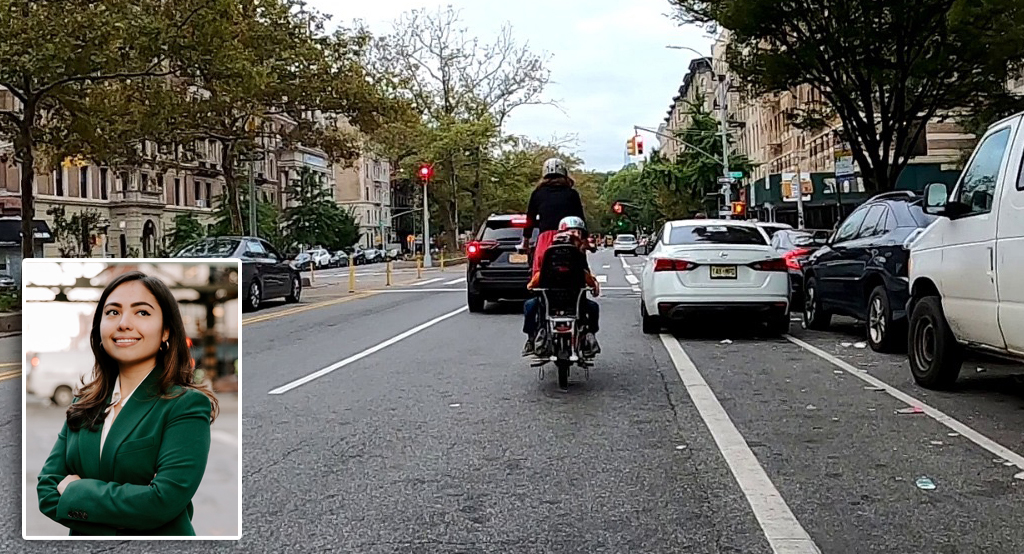 Last week, Jackson Heights residents won a summer-long car-free street, and it turns out that local activists have many more initiatives for a greener, more livable neighborhood in their sights.
Last week, Jackson Heights residents won a summer-long car-free street, and it turns out that local activists have many more initiatives for a greener, more livable neighborhood in their sights.
The Jackson Heights Green Agenda [PDF] -- the product of a community planning process that drew on the expertise of hundreds of residents -- sets an ambitious, bottom-up roadmap for making New York's most diverse neighborhood more sustainable.
The goals outlined in the Green Agenda range from increased open space and green buildings to creating a hiring hall for day laborers in the neighborhood. It's also full of livable streets initiatives. The recommendations include turning streets and parking lots into pedestrian spaces, plazas, and parks. To reduce congestion, the plan calls for adding more Muni-meters to commercial streets and pricing them to increase turnover. To serve a neighborhood where 60 percent of households don't own a car, it envisions bike lanes on Roosevelt Avenue and better transit service.
The Green Agenda emerged from a year-long planning process led by Queens Community House, a set of community centers in the settlement house tradition; the Jackson Heights Beautification Group, and the Pratt Center for Community Development; along with a few other local organizations. Funding for the plan came from a state environmental justice grant.
The coalition held three half-day workshops, starting last November, each of which drew more than 100 people, where residents discussed the strengths and weaknesses of their neighborhood. "Portable workshops" brought the process to churches, adult education classes, and other groups already meeting. The outreach was multi-lingual, an absolute must in a neighborhood where many residents don't speak fluent English.
"We've all been really happy with the process," said Anna Dioguardi, the director of community organizing and development for Queens Community House. "It was definitely challenging to get the conversation started, especially when in many communities, even the word 'green' doesn't mean the same thing it does in English."
Local activists were encouraged by the extent of participation. Len Maniace, a volunteer with the Jackson Heights Beautification Group, praised the campaign's ability to fully include Spanish and Bengali-speakers. He feels a palpable change in the neighborhood. Instead of feeling resigned to living with the way the neighborhood looks and feels now, he said, residents now ask, "Why shouldn't I have a really nice looking neighborhood?"
All that outreach helped to create a plan tailored to the specific needs of Jackson Heights. The top priority for bicycle infrastructure, for instance, is to install more bike racks, said Dioguardi, "because many people don't have room for bikes in their buildings." Jackson Heights residents, many of whom work the night shift, were also more concerned with improving off-peak transit service than other communities might be, added Dioguardi. "The final product is really much more representative of the entire community" than any top-down plan would have been, she argued.
No single group will be pushing the whole agenda. Rather, neighborhood activists will use the document to guide and coordinate their work. Maniace, for example, mentioned signing Jackson Heights residents up for energy efficiency tax credits and making the 78th Street Play Street permanent as next steps. Dioguardi said that Queens Community House would likely focus on affordable, green buildings. According to Dioguardi, the Green Agenda has also earned praise from every Jackson Heights elected official, which could make it an effective advocacy tool if some recommendations encounter resistance later on.





